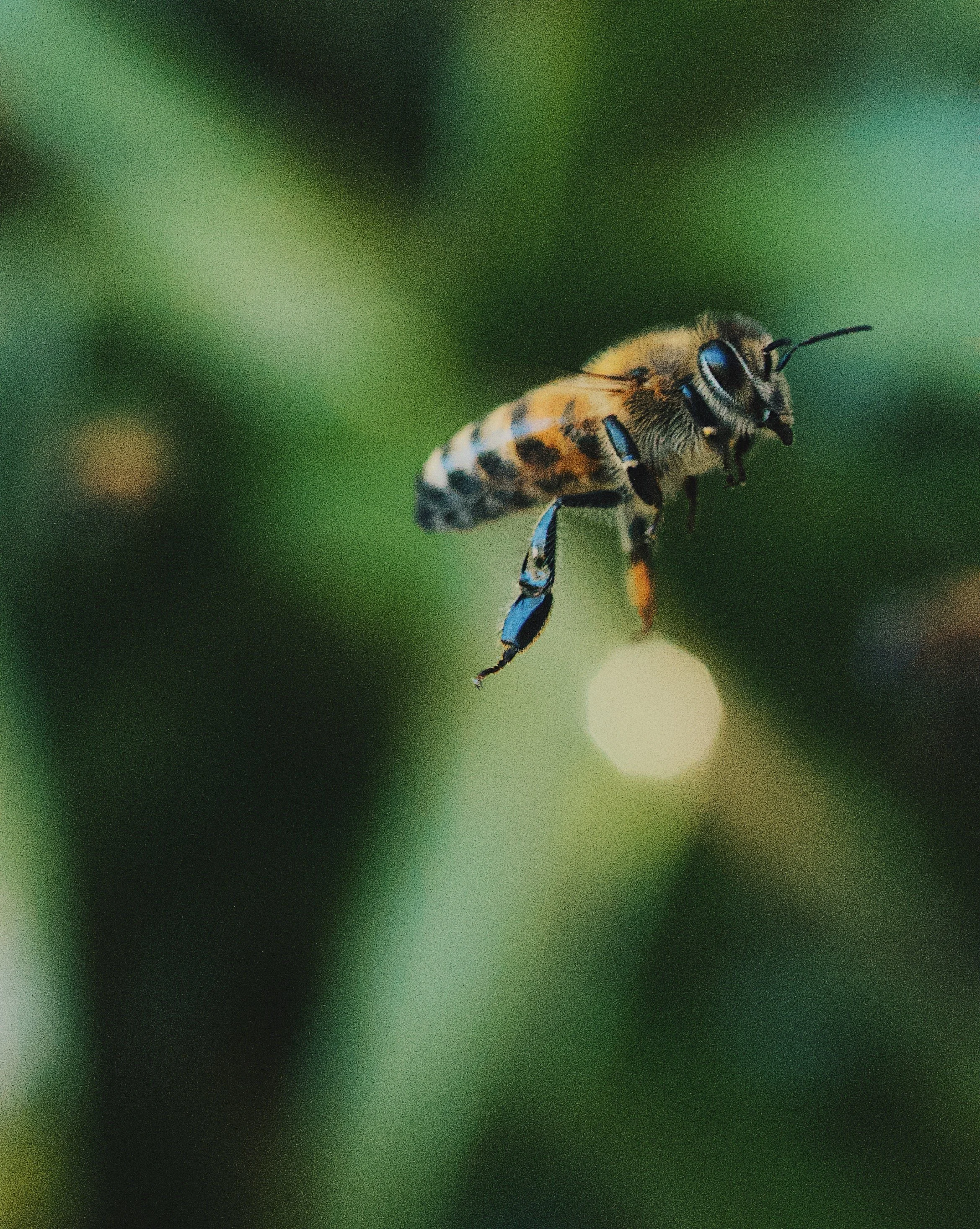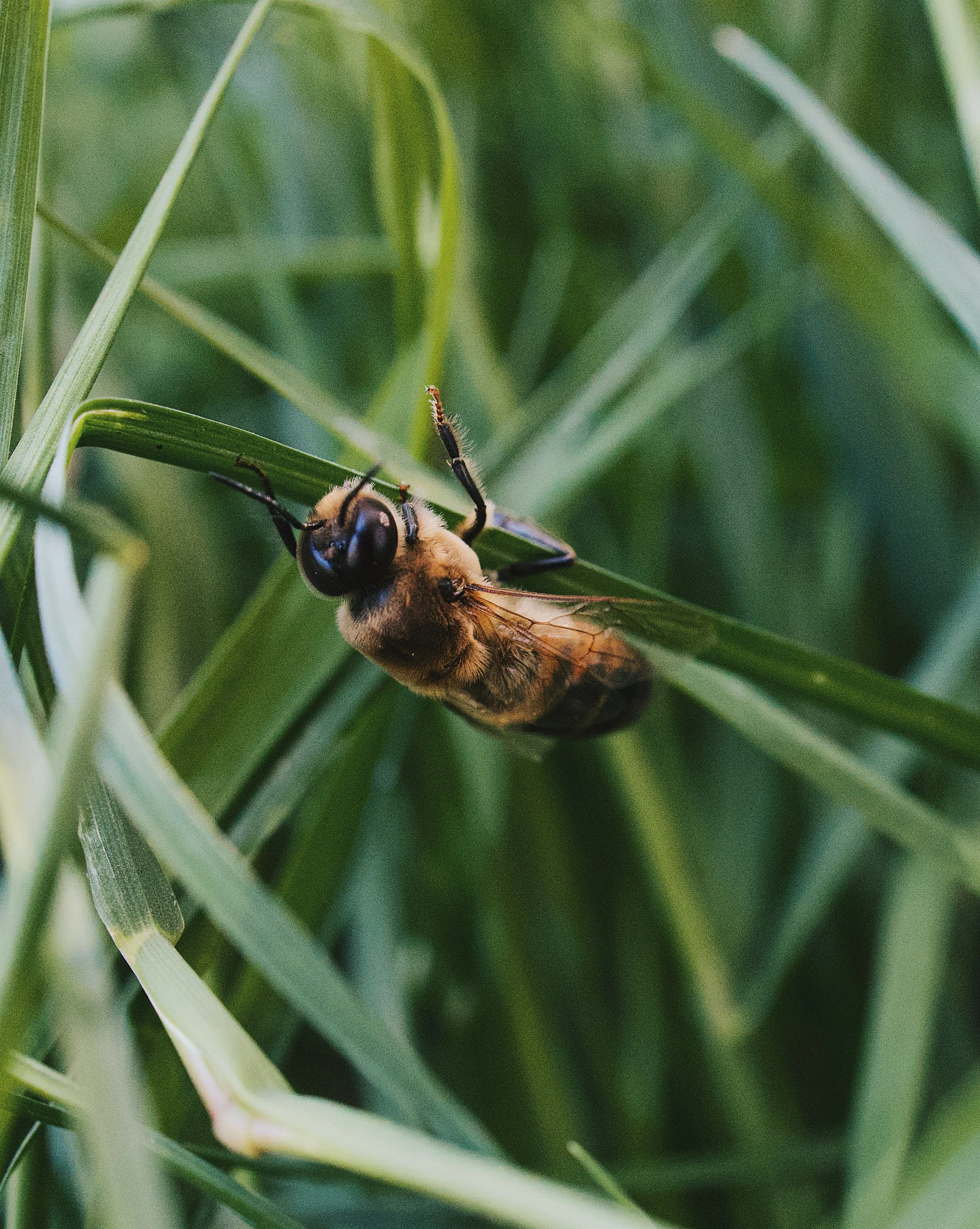Mastering Macro: Tips for Photographing Bees in Flight
I'm always on the lookout for challenging subjects that push my skills to the next level. Recently, I embarked on a mission to capture the elusive beauty of bees in mid-flight. The result was a series of images that not only tested my technical abilities but also deepened my appreciation for these tiny creatures.
Gear and Setup
For this project, I used my trusty Canon EOS R6 Mark II paired with a 35mm macro lens. This combination allowed me to get up close and personal with the bees while maintaining the sharpness and detail necessary for such small, fast-moving subjects. Here are the settings I used for most of the shots:
ISO: 6400
Focal Length: 35mm
Aperture: f/6.3
Shutter Speed: 1/1000 sec
Finding the Perfect Settings
Capturing bees in flight is no easy feat, they’re very fast and very small. It took repeated attempts over several days to strike the right balance between the natural lighting, lens type, shutter speed, aperture, and ISO. The key was to keep the bees in sharp focus, eliminate motion blur, and minimize overall noise. Here’s a glimpse into the settings that worked best for me:
Shutter Speed: Fast enough to freeze the bees' rapid movements in mid air, typically around 1/1000 to 1/2000 seconds.
Aperture: A sweet spot that provided enough depth of field to keep the bees sharp but also allowed for a pleasing background bokeh, usually between f/4 to f/6.3.
ISO: Adjusted to try and maintain a noise-free image while stopping the lens down and having such a fast shutter speed yet still balancing the exposure, often around 6400 which is usually reserved for much lower light conditions.
The Role of Natural Light
Natural light was another crucial factor in these shots. I revisited the spot a few times over the course of a few days, observing the bees and experimenting with different lighting conditions. The golden hours late afternoon when there was some shade with a bit of dappled light coming through the trees provided the soft, diffused light that highlighted the bees beautifully without harsh shadows.
Behind the Scenes
Photographing near a bee's nest required a lot of patience. Initially, I was worried about getting stung, but as I spent more time around the bees, I learned to move slowly to avoid disturbing them. Given the focal length of my lens, I had to get within millimetres of the bees, which was a unique challenge in itself.
I took several thousand photos over multiple sessions to get just a few perfect shots. It involved figuring out the best angles, the ideal depth of field, and the right backgrounds. Waiting for the perfect moment when a bee was isolated against a clean background was crucial, as they move incredibly fast and often in groups.
Post-Processing
Once the shooting was done, I brought the images into my editing software for some simple color grading and slight cropping. The goal was to bring out a nice overall colour palette without over-processing the images. This minimalistic approach ensured that the images remained true to what I observed.
Tips for Capturing Bees in Flight
1. Patience is Key: Spend time observing the bees and their patterns. Patience will yield the best results.
2. Use Fast Shutter Speeds: To freeze the motion, set your shutter speed to at least 1/1000 seconds.
3. Natural Lighting: Shoot during the golden hours for the best natural light.
4.Get Close: Use a macro lens to get up close, but be mindful of your movements to avoid startling the bees.
5. Take Multiple Shots: Be prepared to take thousands of photos to get a few perfect ones.
The Inspiration Behind the Project
The idea of capturing bees in mid-flight came from a desire to challenge myself. I knew that freezing such fast-moving and small subjects perfectly in mid air would be quite difficult to achieve.
Feedback
I’d love to hear about your own experiences with challenging photography projects. Feel free to share your stories and tips in the comments below!






